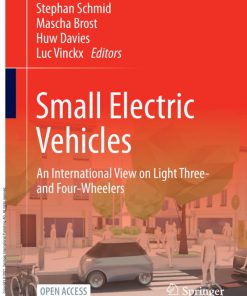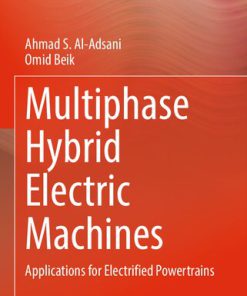Electric and Hybrid Electric Vehicles by James D. Halderman 9780137532230 0137532237
$50.00 Original price was: $50.00.$25.00Current price is: $25.00.
Electric and Hybrid Electric Vehicles James D. Halderman – Ebook Instant Download/Delivery ISBN(s): 9780137532230, 0137532237
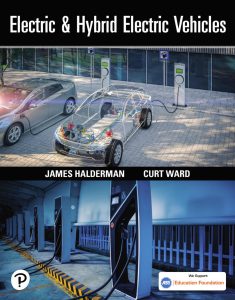
Product details:
- ISBN 10:0137532237
- ISBN 13: 9780137532230
- Author: James D. Halderman
Electric and Hybrid Electric Vehicles
Table contents:
Chapter 1 Hybrid and Electric Vehicle Safety
Learning Objectives
Key Terms
High-Voltage Safety
Need for Caution
Precautions for Electronic Medical Devices
Identifying High-Voltage Circuits
Electric Shock Potential
Locations Where Shock Can Occur
Electric Vehicles in the Service Area
Personal Protective Equipment (PPE)
Eye Protection
High-Voltage Gloves
Leather Protectors
Shop Uniform
Insulated Shoes or Boots
Insulated Rubber Mats and Blankets
Fire Extinguishers
Other Personal Protection Equipment
High-Voltage Tools and Equipment
CAT III Rated Digital Multimeter
Megohmmeter (Insulation Tester)
Insulated Hand Tools
Safety Interlock System
Purpose and Function
Local Interlock
Depowering the High-Voltage System
The Need to Depower the High-Voltage System
Hoisting a Hybrid or Electric Vehicle
Moving a Hybrid or Electric Vehicle Around the Shop
Summary
Review Questions
Chapter Quiz
Chapter 2 Introduction to Electric and Hybrid Electric Vehicles
Learning Objectives
Key Terms
Hybrid Electric Vehicles
Definition of Terms
Electric Vehicle
Definition of Terms
History
Early Electric Vehicles
Early Hybrid Vehicles
Efficiencies of Electric Motors and ICEs
Driving a Hybrid or Electric Vehicle
Driving a Hybrid Vehicle
Driving an Electric Vehicle
Owning a Hybrid or Electric Vehicle
Routine Maintenance
Levels of Hybrid Vehicles
Micro Hybrid
Mild Hybrid
Medium Hybrid
Full Hybrid
Classifications of Hybrid Vehicle Powertrain
Series Hybrid Powertrain
Parallel Hybrid Powertrain
Series-Parallel Hybrid Powertrain
One-, Two-, and Three-Motor Hybrid System
One-Motor Hybrid Systems
Two-Motor Hybrid Systems
Three-Motor Hybrid Systems
Advantages and Disadvantages of an Electric Vehicle
Advantages
Disadvantages
Tips for Range Increase
Summary
Review Questions
Chapter Quiz
Chapter 3 Health and Environmental Concerns
Learning Objectives
Key Terms
Need for Electric Vehicles (EV) and Hybrid Electric Vehicles (HEV)
Reduction of Fossil Fuels
Carbon-Based Fuels
Carbohydrates
Chemistry of Carbon-Based Emissions
Greenhouse Gases
Ozone
Definition
Ground-Level Ozone
Vehicles and Ozone
Upper-Level Ozone
Ultraviolet Radiation Absorption
Types of Uv Radiation
Intensity of Radiation
Ozone Control of UVB Irradiance
Health Effects of Air Pollution
Typical Health Issues
Acid Rain
pH Scale
Carbon Footprint
Definition
Reducing the Carbon Footprint
Summary
Review Questions
Chapter Quiz
Chapter 4 Hybrid Engine Systems
Learning Objectives
Key Terms
Hybrid Internal Combustion Engines (ICE)
Hybrid Engine Differences
Engine Fundamentals
Four-Stroke Cycle Operation
Atkinson Cycle
Background
Operation
Atkinson Cycle Engines
Hybrid Engine Design Features
Piston Pin Offset
Offset Crankshaft
Variable Valve Timing
Purpose of Variable Valve Timing
Variable Valve Timing Systems
Parts and Operation
Camshaft Phasers
Spline Phaser System Operation
Vane Phaser System on an Overhead Camshaft Engine
Diagnosis of Variable Valve Timing Systems
Diagnostic Steps
Hev ICE Cooling System
Engine (ICE) Cooling
Thermostats
Cooling System Testing
Scan Tool
Visual Inspection
Pressure Testing
Coolant Dye Leak Testing
Coolant Heat Storage System
Purpose
Need to Retain Heat
Modes of Operation
Hybrid Engine Run Mode
Purpose
Engine Operating Procedure
Hybrid Engine Testing
Compression Test
Cylinder Leakage Test
Summary
Review Questions
Chapter Quiz
Chapter 5 Hybrid and Electric Vehicle Preventative Maintenance
Learning Objectives
Key Term
Routine Service Procedures
Customer Perception
Instrument Cluster Warning Messages
Non-High Voltage Components That Impact Fuel Economy
Placing the Hybrid Vehicle in Maintenance Mode
Lifting an Electric Vehicle
Oil and Filter Service
Engine Maintenance
Cooling System Service
Braking System Service
High-Voltage Battery Air Filter
Air-Conditioning Service
Tire Service
Noise-Reducing Tires
Auxiliary Battery Testing and Service
Steering System Service
Diagnosis Procedures
Summary
Review Questions
Chapter Quiz
Chapter 6 Digital Storage Oscilloscope Testing
Learning Objectives
Key Terms
Types of Oscilloscopes
Terminology
Oscilloscope Display Grid
Scope Setup and Adjustment
Setting the Time Base
Volts Per Division
DC and AC Coupling
DC Coupling
AC Coupling
Pulse Trains
Definition
Frequency
Duty Cycle
Pulse Width
Number of Channels
Definition
Triggers
External Triggers
Trigger Level
Trigger Slope
Using a Scope
Scope Leads
Measuring Auxiliary Battery Voltage with a Scope
Using DSO Accessories
Current Clamps
Pressure Transducers
Waveform Analysis
Data Recording
Can the Condition Exist Normally?
Line Characteristics
Summary
Review Questions
Chapter Quiz
Chapter 7 Energy and Power
Learning Objectives
Key Terms
Energy
Definition
Laws of Thermodynamics
Energy Units
Torque, Work, and Power
Torque
Work
Power
Horsepower
Electrical Power
Background
Electrical Power
Solar Electric Generation
The Sun
Photovoltaics
Photovoltaic (Photoelectric Cell) Operation
Wind Energy Generation
Wind Power
Wind Farms
Hydroelectric Generation
Definition
Economic Impact
Geothermal Energy
Definition
GHP System
EER
Summary
Review Questions
Chapter Quiz
Chapter 8 Advanced AC and DC Electricity
Learning Objectives
Key Terms
DC Electricity
Definition
DC Generation
DC Waveform
AC Electricity
Definition
AC Generation
AC Waveforms
Power Output (Watts)
Background
Formulas
Capacitors
Construction
Operation
Spike Suppression
Magnetic Force
Magnetism
Electromagnetism
Electromagnetic Induction
Motor Control
Principles
Examples
Motor Control IGBTs
EV and HEV Electrical Measurements
Milliohms
Milliohms Measurement
Megohms
EV and HEV Module Communications
Can Bus Communication
Can Features
CAN Class A, B, and C
Module Reprogramming
Purpose
SAE J2534 Standard
Programming Hardware
Programming Software
Vehicle Security Professional—Locksmith ID
On-Board
Off-Board
Remote
Summary
Review Questions
Chapter Quiz
Chapter 9 Low-Voltage Batteries and Stop-Start Micro Hybrids
Learning Objectives
Key Terms
Introduction to the 12-Volt Battery
Purpose and Function
Why Batteries are Important
The Hybrid or Electric Vehicle Will Not Start if the Auxiliary Battery is Discharged
How a Battery Works
Principle Involved
During Discharging
Fully Discharged State
During Charging
Valve-Regulated Lead-Acid Batteries
Terminology
12-Volt Battery Ratings
Cold-Cranking Amperes
Cranking Amperes
Reserve Capacity
Ampere Hour
Jis
Battery Service Safety Precautions
Hazards
Safety Procedures
12-Volt Battery Voltage Test
State of Charge
12-Volt Battery Load Testing
Terminology
Test Procedure
12-Volt Battery Conductance Testing
Terminology
Test Procedure
12-Volt Battery Charging
Charging Procedure
Charging AGM Batteries
Battery Charge Time
The 36-48-Volt Battery
Purpose and Function
Construction and Design
Diagnosis and Testing
Stop-Start Defined
Purpose and Function
Term Used
Stop-Start Systems
Bas System
Micro Hybrids
Parts Involved
Operation
Engine Control Module
Transmission Control Module
Intelligent Battery Sensor Module
Body Control Module
Manual Transmission Equipped Vehicles
Heavy-Duty Starter
Batteries
Ultracapacitors
Auxiliary Components
Diagnosis
First Steps First
Diagnosis Procedure
Mild Hybrids
Terminology
Parts and Operation
Diagnosis and Testing
Summary
Review Questions
Chapter Quiz
Chapter 10 High-Voltage Batteries
Learning Objectives
Key Terms
Hybrid and Electric Vehicle High-Voltage Batteries
Purpose and Function
Electric Motor Requirements
Nickel-Metal Hydride Batteries
Uses
Description and Operation
Electrolyte
Operation During Charging
Operation During Discharging
Advantages
Disadvantages
NiMH Battery Designs
Battery Cells Are Connected in Series
Lithium-Ion High-Voltage Batteries
Uses
Description
Construction
Operation
Advantages
Disadvantages
Designs of Lithium-Ion Cells
Cylindrical
Prismatic—Hard Case
Prismatic—Pouch Type
Types of Lithium-Ion Batteries
Numerous Materials
Cathode Material
HEV/EV Electronics Cooling
Need for Cooling
Effects of Heat on the Electrical/Electronic System
System Construction
High-Voltage Battery Cooling and Heating
The Need to Heat/Cool HV Batteries
High-Voltage Battery Cooling System Service
EV Battery Heater
Battery Capacity vs Vehicle Range
ICE Vehicle Mileage
Epa vs Wltp
EV Equivalent Economy
High-Voltage Battery Control Components
Battery Control Module
System Main Relays (SMRs)
Current Sensors
Voltage Block Monitoring Circuits
Temperature Sensors
HV Disconnect
Battery Management System (BMS)
Purpose
Electrical Distribution System (EDS)
Purpose
Isolation Testing
State-of-Charge Management
HEV High-Voltage Battery Monitor
State-of-Charge
Scan Data Test Procedure
Lithium-Ion Battery Repair
Purpose
Procedure
Alternative Out-of-Vehicle HV Battery Service
Procedure
Determine Internal Resistance
Match State-of-Charge
Battery Degradation and Balancing
Rate of Degradation
Passive and Active Cell Balancing
Normal Operation
Summary
Review Questions
Chapter Quiz
Chapter 11 EV and HEV Motors, Converters, and Inverters
Learning Objectives
Key Terms
Electromagnetism
Principles
Creating an Electromagnet
Straight Conductor
Right-Hand Rule
Field Interaction
Motor Principle
Coil Conductor
Electromagnets
Electromagnetic Induction
Principles Involved
Voltage Strength
Electric Motors
Electric Motor Power
Electric Motor Operation
Brushless Motors
Types
AC Induction Motor
AC Synchronous Motor
Permanent Magnet Motors
Operation
Electric Motor Torque
Electric Motor Control
Principles
Examples
Motor Control IGBTs
Resolver
Temperature Sensors
Cooling the Electronics
Capacitors in Converters
Principles
Operation
Precautions
Farad Rating
Snubbers
Converters and Inverters
Converters
Inverters
Pre-Charge Relay
Boost Converters
Electronic System Cooling System
Need for Cooling
Diagnostic Steps
Motor–Converter–Inverter Diagnostics
Global (Generic) Diagnostic Trouble Codes
Testing the Electric Motor Stator
DC–DC Converter Testing
Inverter Testing
Loss of Isolation Testing
Summary
Review Questions
Chapter Quiz
Chapter 12 EV and PHEV Charging
Learning Objectives
Key Terms
Plug-in Hybrid Electric Vehicles
Terminology
Identifying a PHEV
PHEV Battery Capacity
PHEV Examples
Charging a PHEV
Electric Vehicles
EV Battery Capacity
Cold-Weather Concerns
Hot-Weather Concerns
Range
Cost of Charging
Kilowatts Per 100 Miles
Level 1 Charging
20-Ampere Circuit
Precautions Using a Level 1 Charging
Level 2 Charging
Higher Voltage Equals Faster Charging
On-Board Chargers
Level 3 Charging
DC Fast Charging
Level 3 Electrical Connectors
Owning and Charging an EV
Time-of-Use
Public Charging Stations (PCS)
Work Place and Destination Charging
Locating a Charging Station
Cost to Charge
Summary
Review Questions
Chapter Quiz
Chapter 13 Electric Vehicle Charging Equipment
Learning Objectives
Key Terms
Electric Vehicle Supply Equipment
Purpose and Function
Nema
Hard Wired
Location
NRTL and Ul
NEC
Permits
EVSE Location
Home Level 2 Charging
Wattage
SAE J1772 Standard Charger Plug
Wireless Charging
How It Works
Wireless Charging Standards
Two Measurements
Summary
Review Questions
Chapter Quiz
Chapter 14 Regenerative Brakes
Learning Objective
Key Terms
Regenerative Braking in Vehicles
Inertia, Force, and Mass
Transferring Energy Back to the Motor
Limitations of Regenerative Brakes
Benefits of Regenerative Braking Systems
Types of Regenerative Brake Systems
Series Regeneration
Parallel Regeneration
Regenerative Brake Components
One-Pedal Driving
Definition
Examples
Deceleration Rates
Terminology
Examples
Servicing Regenerative Brakes
Unique Master Cylinders
Ford Escape Precautions
Summary
Review Questions
Chapter Quiz
Chapter 15 Electric Power Steering
Learning Objectives
Key Terms
Electric Power Steering
Terminology
Advantages
Types or Designs
Parts and Operation
Types of Motor Used
Eps Control Unit
Inputs and Outputs
Power Steering Control Module
Steering Shaft Torque Sensor
Steering Wheel Position Sensor
Fault Detection
Electric Power Steering Diagnosis
Diagnostic Procedure
EPS DTCs
Summary
Review Questions
Chapter Quiz
Chapter 16 EV and HEV HVAC System
Learning Objectives
Key Terms
HEV ICE Cooling System
Engine Cooling
Basic Operation
Water Pump
Thermostat
Hev Cabin Heating Systems
Principles
Parts and Operation
Heating Systems
Electric Engine Water Pump
Heat Mode
Modes of Operation
Failure Mode
Auxiliary Water Pump Diagnosis
Coolant Heat Storage System
Purpose
Parts and Operation
PTC Heaters
Operation
HEV Cabin Cooling
Basic Operation
Airflow
Defrost
A/C Mode
HEV A/C Components
Compressors
Compressor Drives
Compressor Oil
Condensers
Subcooling Condensers
Expansion Devices
Evaporators
Thermal Storage During Idle Stop
Unique Hybrid and Electric Vehicle Air-Conditioning Service
EV Heating
Emphasis is on Range
Electrical Resistance Heating
PTC Heaters
Heat Pump
Purpose and Function
Parts and Operation
Liquid-Cooled Condenser (LCC)
Summary
Review Questions
Chapter Quiz
Chapter 17 EV and HEV Transmissions
Learning Objectives
Key Terms
Transmissions and Transaxles
Purpose and Function
Powertrain Configuration
Principles Involved
Torque Delivery
Multiple Speed Transmissions/Transaxles
HEV Transmissions
Classifications
Electric Auxiliary Pump
Hydraulic Impulse Storage Accumulator
GM Parallel Hybrid Truck (PHT)
Description
Operation
Service
GM Two-Mode Hybrid Transmission
Description
Components
First Mode of Operation
Second Mode of Operation
Two-Mode Service
Ford/Lincoln 10R80 MHT
Description
Components
Service
Toyota/Lexus Power-Split System
Applications
Description
Operation
Construction
Service
Toyota Hybrid eCVT Transmission
Purpose and Function
Description and Operation
Hybrid Electric Rear Axle
Purpose and Function
Description and Operation
Hybrid Transmission Diagnosis
Steps Involved
Electric Vehicle Transmissions
Acceleration vs Top Speed
Single Speed Gearing
Ford Mustang Mach-E
Chevrolet Bolt
Nissan Leaf
Two-Speed Gearing
Summary
Review Questions
Chapter Quiz
Chapter 18 EV and HEV Driver Assist Systems
People also search:
electric and hybrid electric vehicles
electric and hybrid electric vehicles by james d halderman
difference between electric and hybrid electric vehicles
artificial intelligent techniques for electric and hybrid electric vehicles pdf
a review on vibrations in electric and hybrid electric vehicles
You may also like…
Engineering - Automotive
Modern Electric, Hybrid Electric, and Fuel Cell Vehicles 3rd Edition Kambiz Ebrahimi
Engineering - Automotive
Engineering - Automotive
The Science of Electric Vehicles: Concepts and Applications 1st Edition Frank R. Spellman
Engineering - Electrical & Electronic Engineering
Engineering - Energy & Power Resources
Engineering - Electrical & Electronic Engineering
Electric Circuits [11th Ed, Global Ed] 11th Edition James W. Nilsson
Engineering - Automotive

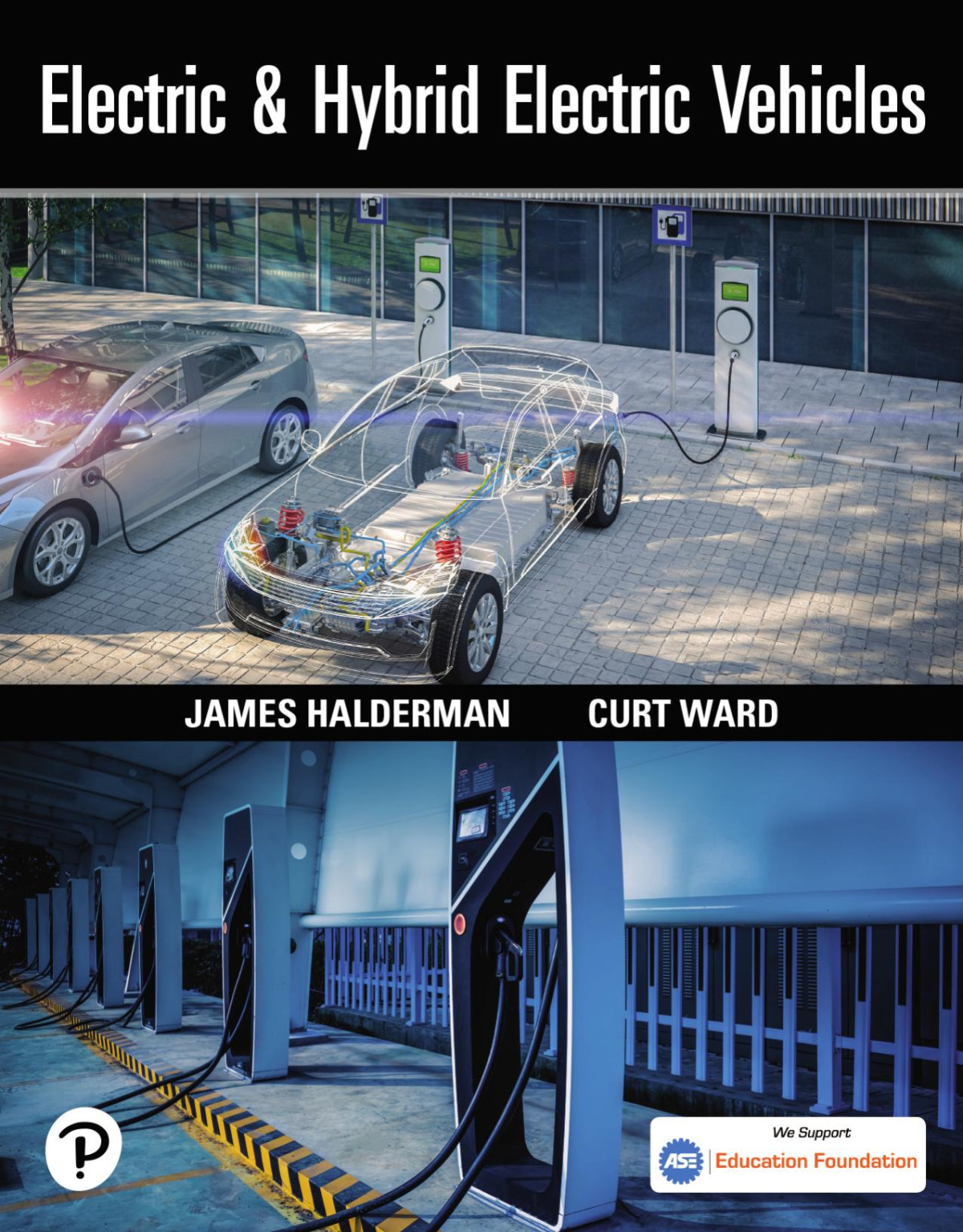


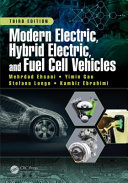
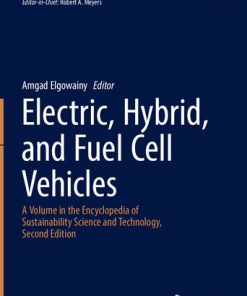
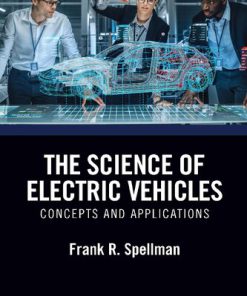
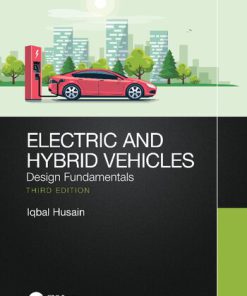


![Electric Circuits [11th Ed, Global Ed] 11th Edition James W. Nilsson](http://ebookmeta.com/wp-content/uploads/2024/05/electric-circuits-11th-ed-global-ed-34950150-247x296.jpg)
